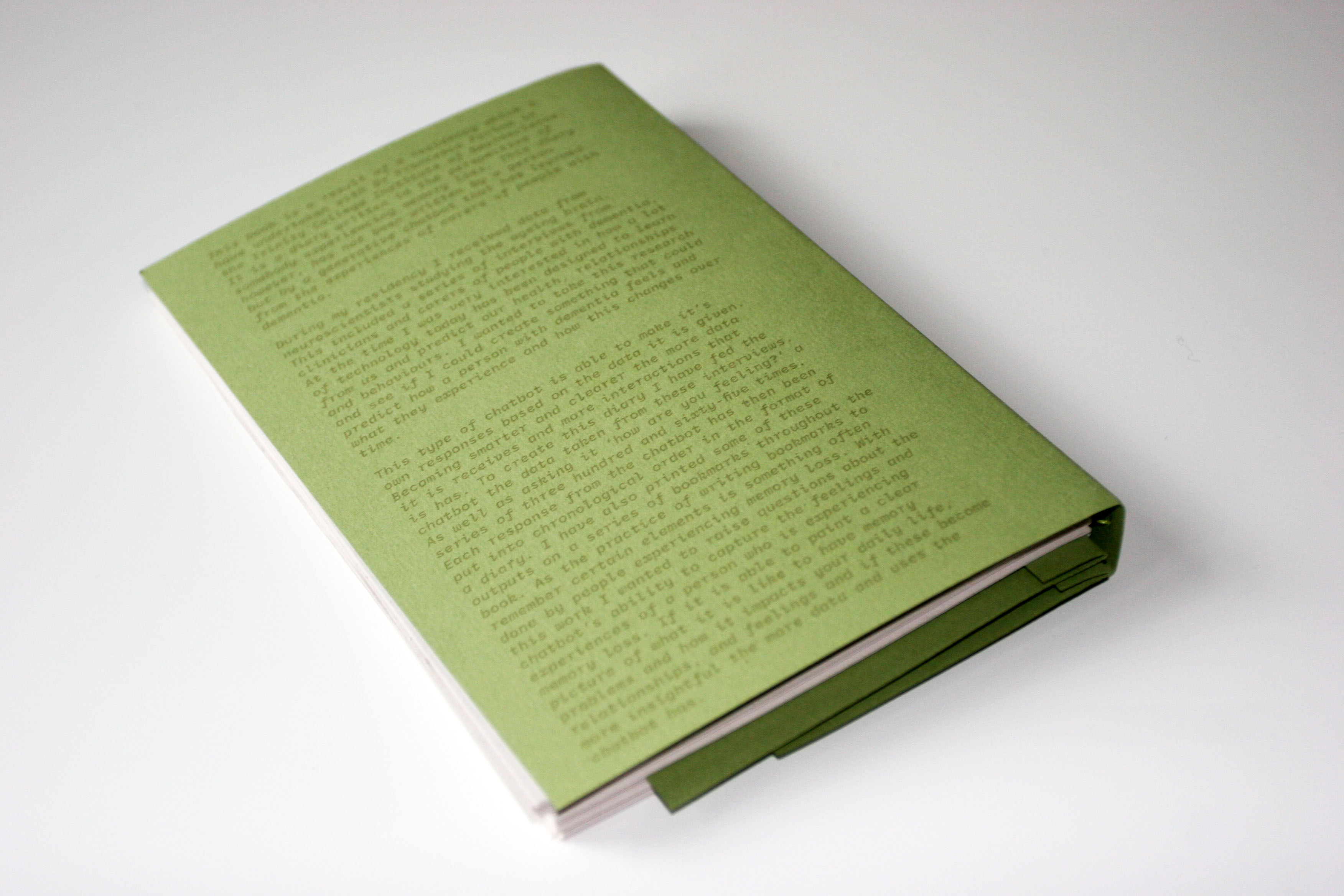
Remembering What I Have Forgotten
Book
2020
This is also a piece of work created during my residency in Trinity Institute of Neuroscience and is in the format of a diary of a person experiencing memory loss. This diary however has not been written by a person but by a generative chatbot that has also learned from experiences of carers and doctors of people with dementia and created its own entries.

The difference between this work and the 'Train of Thought Bot' is that I have used a generative chatbot that creates its own sentences from the data. Where a retrieval based chatbot which I used for the 'Train of Thought Bot' will use snippets of the existing data for it’s replies. With this generative chatbot it’s outputs becomes smarter the more time it has and outputs it creates. To create this work I collected all of these outputs and sorted them into chronological order in a diary format. With greater insights and understanding of the experiences of a person with dementia the further you are into the diary. I felt this might be able to recreate the journey of a person experiencing dementia.
Due to the personal nature of the data collected by the researchers, I felt that presenting it in this format allowed for another approach into the work in a context that might allow for a more empathetic level of understanding. Within the diary I included bookmarks a series of bookmarks which featured some entries created by the chatbot. With this I wanted to recreate the action of note taking on snippets of paper to remember details and information, something often done by people experiencing dementia. I wanted this piece to mimic the practice of note taken and diary keeping often done by people experiencing memory loss. To mirror their experience and their growth in knowledge of the illness as time passes. While also researching how effective the chatbot is in capturing this experience, these emotions and this higher level of understanding as time passes.
Next Project
Previous Project
Home
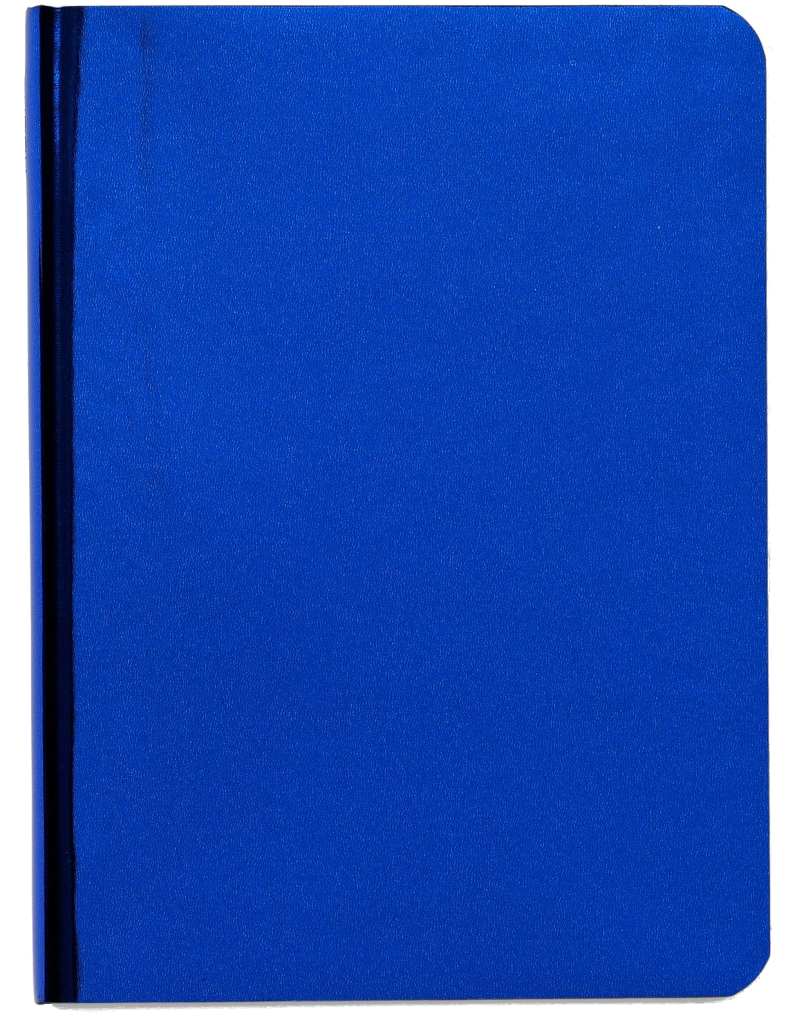
Project “AF:CFFiIV” - pt9 art group Led by Fedor Chervinsky
Since this work is a follow on from 'Train of Thought Bot' a lot of my research is the same for this piece. I have included this research again for viewing the piece individually.
When starting this residency I was very interested in the cross over of art and science. Creating work that included research and experimentation. When looking at artists that worked with the theme of neuroscience, I was drawn to work that visualised different processes in the brain. That was immersive and empathetic of different brain functions. That asked questions and raised awareness. While also being very visually appealing. Project “AF:CFFiIV” is a video piece created to illustrate imagination. Based on three neural networks this piece first generates images of human faces, creates descriptions of the images based on the category deemed by the software and then reproduces these descriptions with a trained voice.

Starlight Gone - Elizabeth Parent & Liam O'Leary
Starlight Gone is an interactive installation about depression. This piece portrays how loss can initiate a union that protects against future loss. The artists constructed metal wire sculptures that are that are to-scale replicas of astrocytes found in the human prefrontal cortex. The flame in the soma of the largest astrocyte structure grows larger as viewers approach it, indicating that the expression of depression is often the loss of human contact.
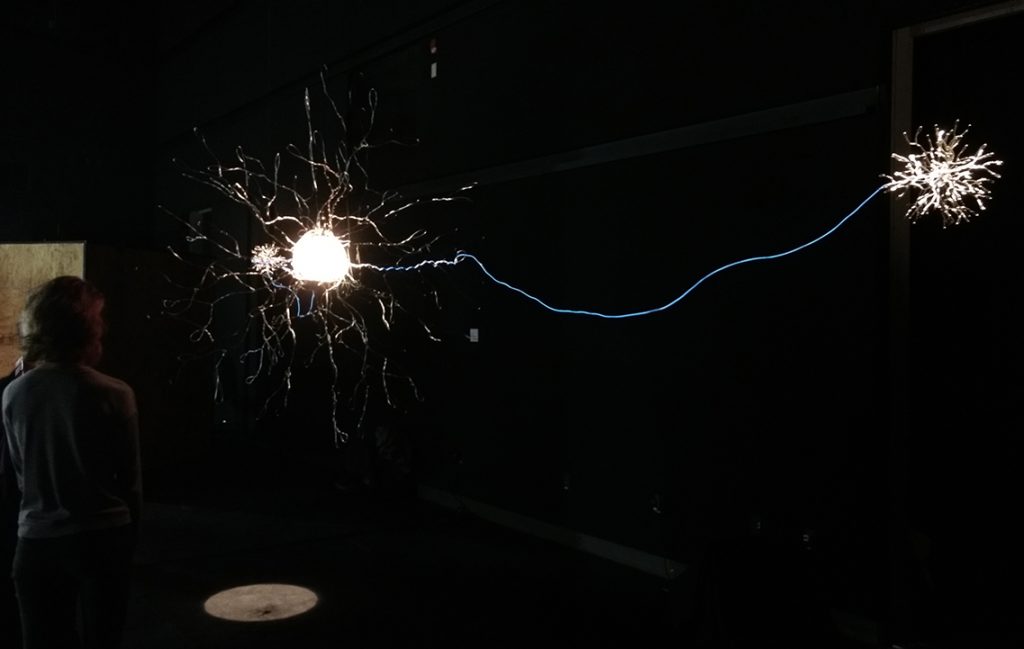
Various Works - Georgia Lupi
I started to look at artists that visaulised data in their work. I came across Georgia Lupi who is an information designer. However instead of visualising things such as percentages and numbers. Lupi takes a humanistic approach to her work. Visualising data about her daily activities, thoughts and feelings. Lupi is an advocate for data humanism and challenges the impersonality of data in her work. ’Designing engaging visual narratives that reconnect numbers to what they stand for: stories, people, ideas’. I was very intrigued by both the creativity of Lupi’s designs, how intricate and engaging they were but also how Lupi brought nature into her data and worked with collected human activities. I felt that this would be interesting for working with the EEG data for how it is based on a human and their brain activities. I felt it would be important in my work to remember the human side of this data and to communicate this.

Various Works - Lauri Frick
Laurie Frick is another data artist that I came across. Similar to Lupi, Frick also uses her work to visualise things that happen in her daily life. Frick instead uses different devices to collect this data about her. Taking a more technological and accurate approach to her work. This has been done to comment on the amount of data collected about us every day with the growth of wearable technology. ‘In the past decade we’ve gone from being mostly anonymous to almost constantly tracked. Data surrounds us and follows us around. I use rigorous methods to capture, analyse and tell a story with data.’
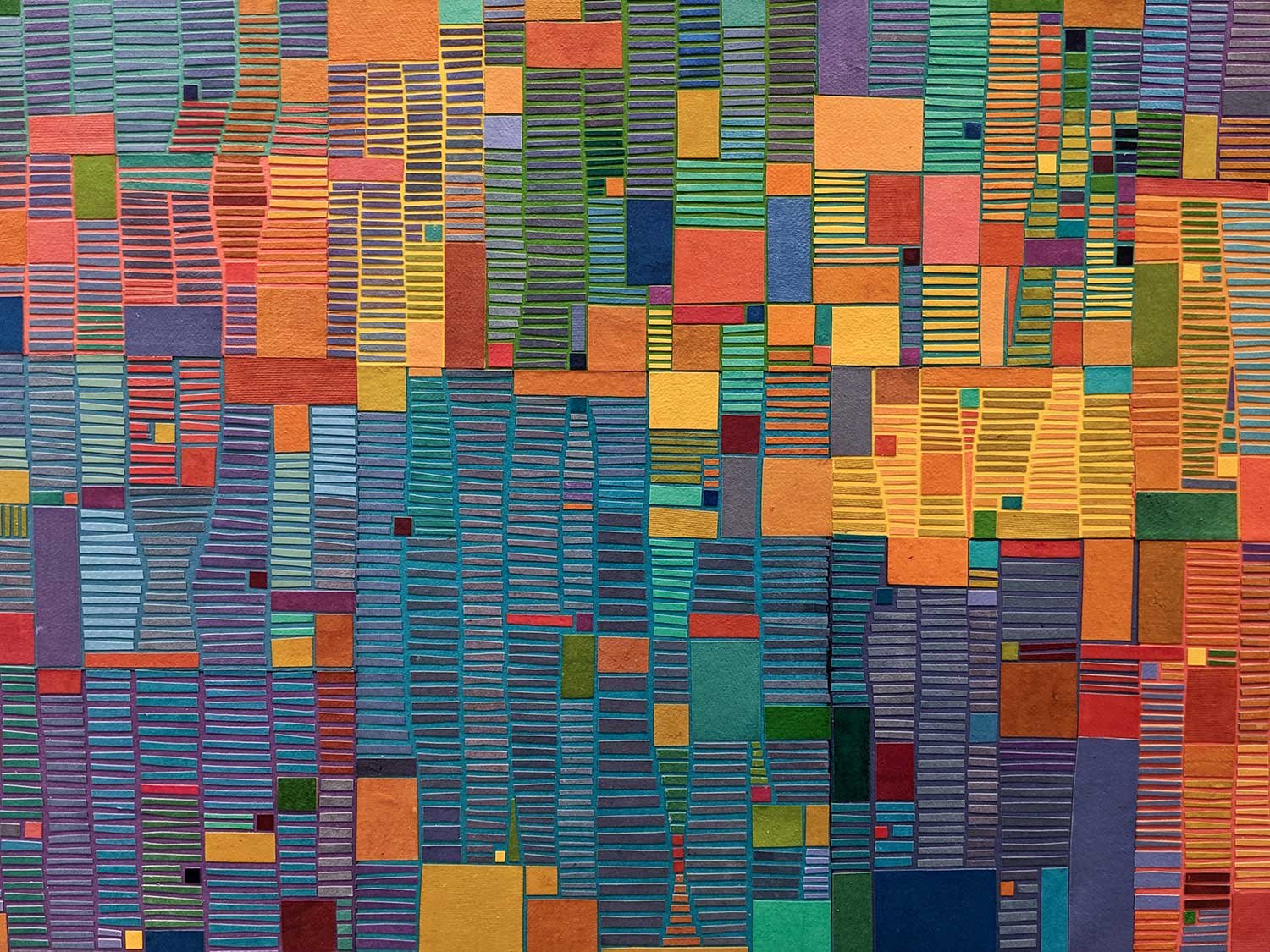
Machine in Flux - Sunjoo Lee and Ko de Beer
I then came across this piece ‘Machine in Flux’. This piece is documentation, and cartography, of time and environment inspired by growth mechanism of trees’ annual rings. The machine sensitively responds to changes of light, wind, temperature, humidity, and sound. Through time a unique, unforeseen pattern emerges. It is an exploration into the programmable.
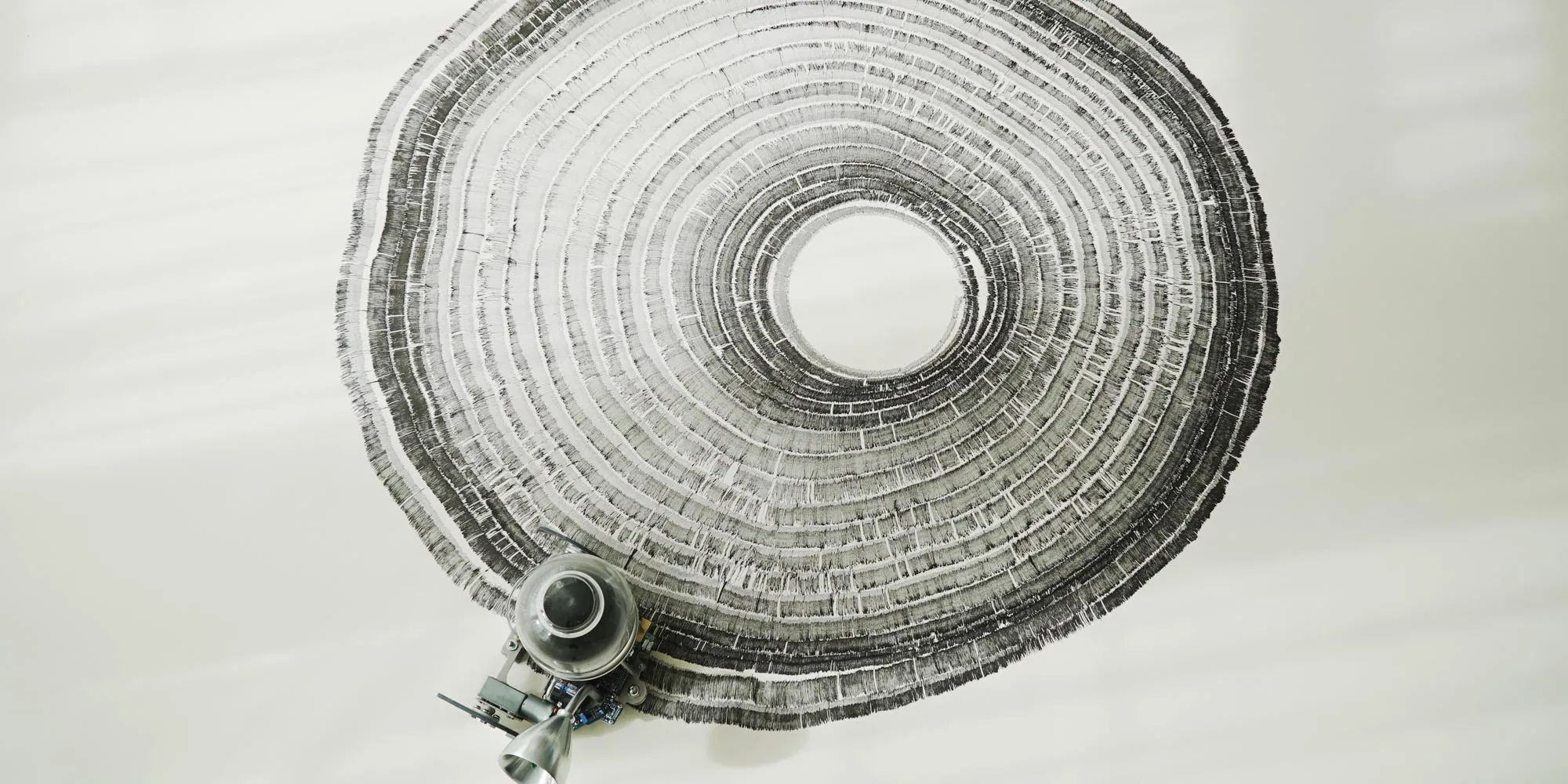

Symbolic Grounding - Christian Faubel and Wolfgang Spahn
I then came across this work ‘Symbolic Grounding’ which is a kinetic light and sound installation that runs on a network of 100 artificial analogue connections. This network produces an ever-changing set of rhythms and patterns that are not programmed beforehand but that result from the very connectivity of this network. These rhythms and patterns are made audible and visible using
Different devices such as loud-speakers, motors, an oscilloscope, liquid-light projectors and a xy-recorder. These devices allow the visitors to experience the complexity that already happens in networks with only 100 neurons and provide a glimpse of the complexity of interactions in a network of 86 billion neurons such as the human brain.
I also felt that this work appealed to what I wanted to create in my work. Making real and interactive what is happening in our brain.


Various Works - Marcell Schwittlcik
I decided that I wanted tO be able to use the data I was given and interperate this in some way. I came across the idea of doing this through the use of a plotter. I took inspiration form the work of Marcell Schwittlick. I really enjoyed the visuals he was able to create as well as the work involved in creating these plotters.

#RiseandGrind - Conor McGarrigle
I also started to look at artists working with AI as I found it was something being questioned and experimented a lot in the art world in recent years. I felt that this could also offer a way of working with and interpretating the data I had received. '#RiseandGrind is a generative installation that data-mines Twitter to capture millions of conversations, from Twitter hashtags (#Riseandgrind and #Hustle) chosen to represent a very specific filter bubble (embodied neoliberal precarity), which are used to train a recurrent neural network to produce a biased AI that generates text for a Twitter Bot that participates in social media discourse on 24/7 internet culture.'
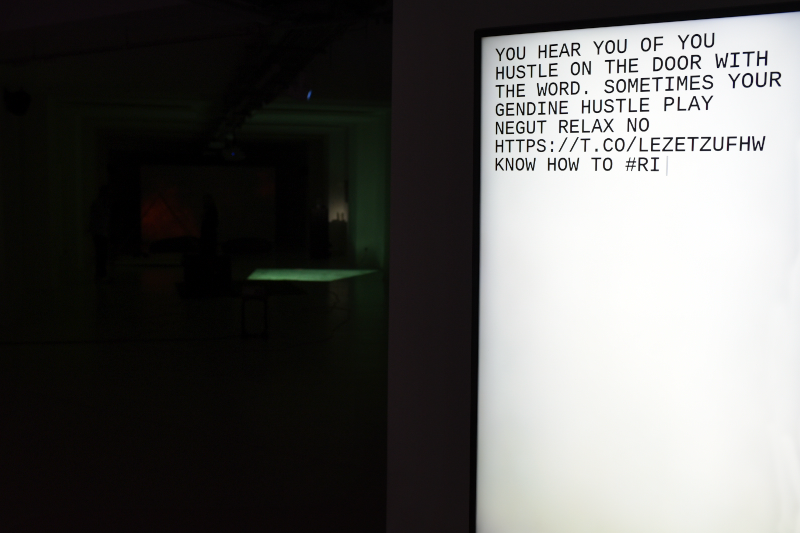
Frankie the Documentarian Robot - Maayan Sheleff and Eran Hadas and Gal Eshel
'Frankie is a robot that interviews people, attempting to ‘learn’ what it means to be human. It responds to emotions both with language and eye (camera) movements, creating computer-generated, emotion-inspired videos. The interviews, conducted worldwide, are uploaded online, forming an archive of Frankie’s research.
A curious and persistent robot, Frankie has the cuteness of Wall-E and the edginess of Johnny 5. It is, in fact, a physical version of a chatbot: it ‘understands’ certain words and responds to them both verbally and physically. The ‘brain’ is a cellular phone that includes a self-designed application that controls the conversation. The surveillance camera ‘eyes’ are connected to a robotic neck, which gets orders from the brain.
As a form of automatic documentation, Frankie questions the role of the artist in a possible future of intelligent machines. A deliberately well-exposed surveillance camera, it examines issues such as agency, control, and privacy.
Frankie is in fact a sort of reverse Turing Test, asking whether machines are becoming more humanlike, or humans are becoming more machinelike. It is also a homage to Frankenstein, and a precursor of Eliza, the first 1970s chat bot designed to resemble a psychoanalyst. As such, it is an ironic reflection on the potential mishaps of a robot that is asked to interrogate emotions.'

Lady Chatterley's Tinderbot - Libby Heaney
Lady Chatterley’s Tinderbot is an interactive installation comprising conversations between an artificially intelligent Tinderbot posing as characters from Lady Chatterley’s Lover and other Tinder users. In this work 200 anonymous Tinder conversations are displayed with an A.I matchmaking chatbot talks to the viewer displaying quotes from 'Lady Chatterley’s Lover' following its own sentiment analysis algorithm.

Lady Chatterley's Tinderbot - Libby Heaney
Lady Chatterley’s Tinderbot is an interactive installation comprising conversations between an artificially intelligent Tinderbot posing as characters from Lady Chatterley’s Lover and other Tinder users. In this work 200 anonymous Tinder conversations are displayed with an A.I matchmaking chatbot talks to the viewer displaying quotes from 'Lady Chatterley’s Lover' following its own sentiment analysis algorithm.

My Boyfriend Came Back From The War - Olia Lialina
When making this work I was reminded of this piece by Olia Lialina, I have always really enjoyed this work and wanted to revisit it to look at the process and methods used by the artist to tell this story. While this work created the story through outcomes decided by the viewer and with my work the outcomes were decided by the chatbot it was interesting to look at how these were presented and the story it told.


